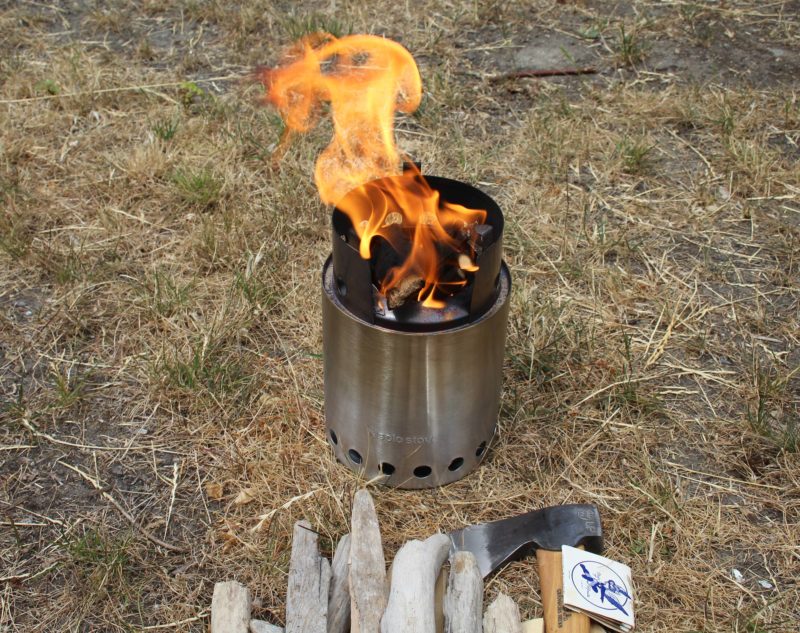 photographs by the author
photographs by the authorThe stove takes some tending to keep it going, but small sticks are all that it requires.
There was a time when a campfire involved clearing the duff from a patch of ground and making a ring of stones. As pleasant as that might have been, it left a scar on the land, both in a circle of scorched earth and butchered trees, living and dead, for firewood. Charcoal tended to get scattered around good campsites, leaving its mark on clothes and camping gear. When I saw the Solo Stoves on the web they looked like a good way to enjoy the benefits of a campfire without being so hard on the natural landscape.
I bought the Titan model, measuring 8″ tall and 5-1/16″ in diameter, advertised as suitable for two to four people. The Lite is the smallest model, listed as a solo backpacking stove for one or two people, but I didn’t need something so compact and could afford to carry a large stove aboard. The two larger stoves, the Campfire (9.25″ x 7″) and Bonfire (14″ x 19.5″) models, are more than I need. A lot of outdoor gear is designed with backpacking and light weight in mind, but the Solo Stove is made of stainless steel at about 1/40″ thick and is just as sturdy as the kitchen cookware that I’ve bashed about for decades.
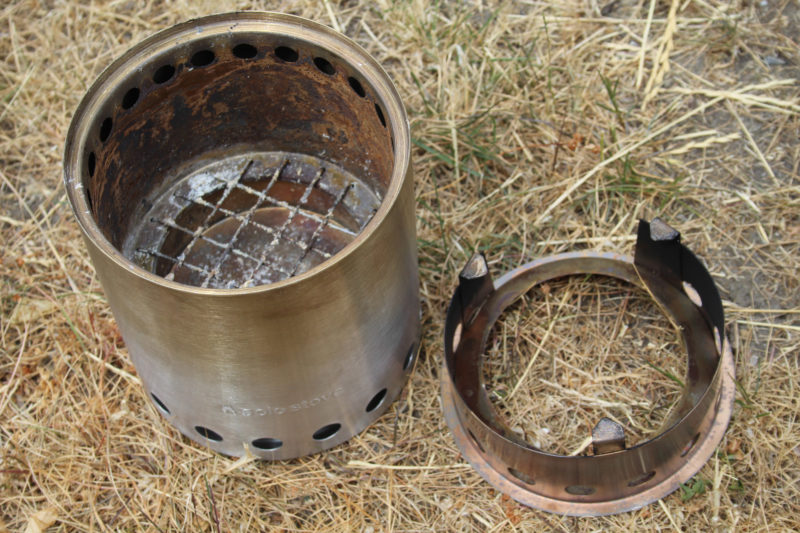
Air enters the stove through the row of holes at the bottom. Half of the air enters the burn chamber through openings hidden beneath the flange supporting the grate; the other half rises between the stove’s inner and outer shells, being heated as it goes, and emerges from the row of holes at the top of the burn chamber. The cookware support is at right.
The stove itself is 5-5/8″ tall and 5-1/16″ in diameter. The cookware support brings the overall height to 8″. There are sixteen 1/2″ holes around the base of the stove. Some of the incoming air travels across the bottom of the inner liner of the stove to a central hole and then to a vent set below a heat-resistant nichrome wire grate that supports the firewood and lets ash pass through to an ash pan. The rest of the air travels upward between the outer and inner walls, getting heated as it goes, and through twenty-two 3/8″ holes at the top of the burn chamber. According to the manufacturer, the heated air results in “a more complete combustion and a hotter fire with less smoke.”
The stove is easy to light and doesn’t take any careful arrangement of tinder, kindling, and firewood. Kindling should be about 3″ long to fit into the stove. A bit of crumpled newspaper, protected from wind by the walls of the stove, catches fire quickly and gets the kindling going. I chopped sticks as thick as my thumb to 6″ lengths. That initially left one end sticking out of the stove, but as the lower end burned away the sticks would fall into the burn chamber.
When the fire is going strong there is indeed very little smoke and what does emanate from the stove dissipates a couple of feet above the ground. The visible effect of the secondary-combustion airflow is to concentrate the flame as it flows through the opening at the bottom of the pot support. With a full load of wood burning and no cookware in place, there is a satisfyingly hypnotic flame flickering 12″ high. That’s bright enough to bathe a campsite in a circle of appealing and useful amber light.
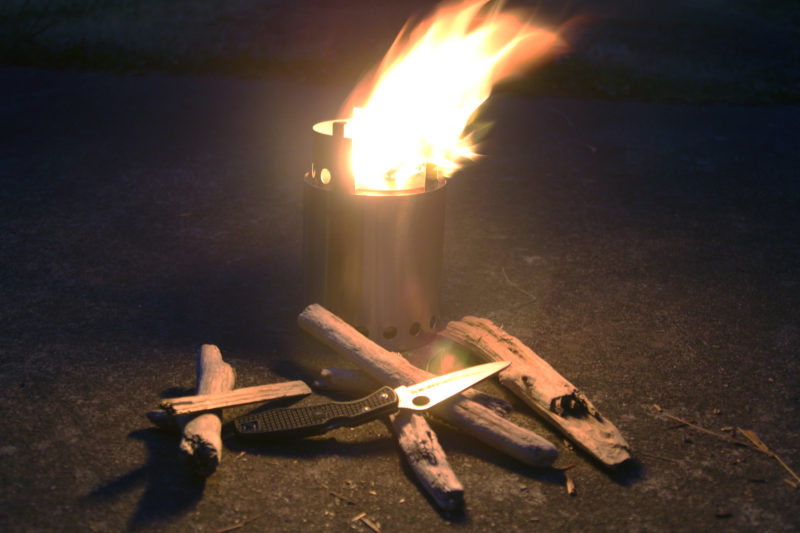
At night, the Solo Stove Titan puts up a flame bright enough to illuminate a campsite.
With pot on the support, flames licked the sides, blackening them with soot. I put a quart of water in the pot and the punky driftwood and old yellow cedar, which had lost most of its fragrant and flammable resin, brought the water to a boil in 8 to 9 minutes. The large burner on my electric range, set on high, took 4 ¼ minutes to get a quart to boil in the same pot.
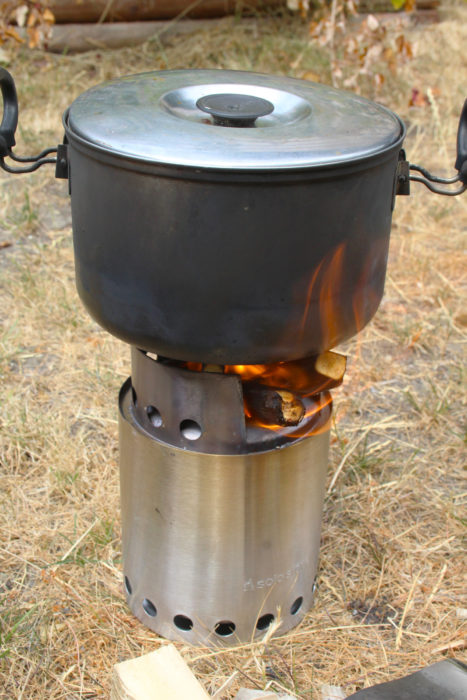
The bottom of the stove is wide enough to provide a fairly steady base for cooking as long as the ground it’s on is level and flat.
Keeping a fire going in the Titan did require having wood ready to load into the stove every few minutes, but not so often that it felt like a nuisance. Tending the fire would fit right in with minding the cookpot. As for gazing into the flame, there’s still plenty of time to slip into that relaxed state between re-stoking.
Left to burn themselves out in the Titan, each of the fires I set left only a couple of tablespoons of powdery ash and a few peanut-sized coals in the ash pan. The stove’s double wall kept the bottom of the stove from getting hot; the dry grass that I’d set the stove on showed no trace of scorching. The interior surfaces of the stove got a bit sooty, but the exterior, though colored by the heat, remained soot-free and easy to put away in the included stuff sack without making a mess of my hands.
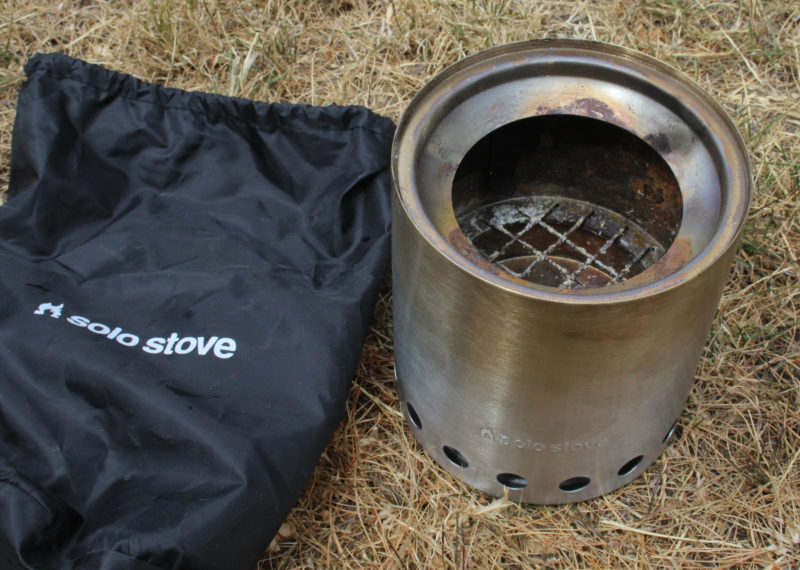
Soot accumulates only on the inside of the stove, so handling it after it has cooled down won’t blacken your hands. The included stuff sack keeps the two pieces together.
The Solo Stove Titan has a minimal impact on the environment, both in fuel it consumes and the traces it leaves behind. It’ll cook dinner and when the meal is over, it will provide the flickering firelight we have been enjoying for tens of thousands of years.![]()
Christopher Cunningham is the editor of Small Boats Monthly.
Thanks to reader Marty Stephens for suggesting this review.
Solo Stove sells the Titan model for $89.99 through their web site and a network of dealers.
Is there a product that might be useful for boatbuilding, cruising or shore-side camping that you’d like us to review? Please email your suggestions.
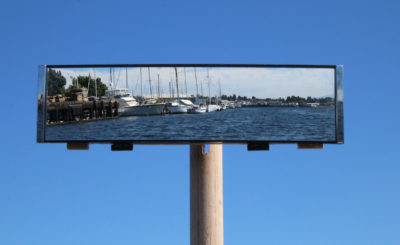
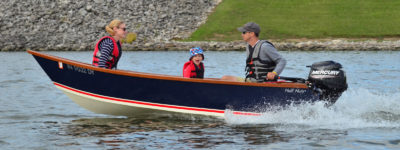
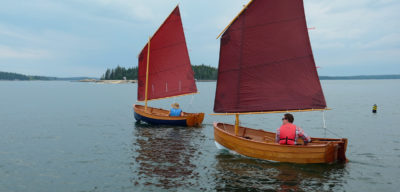
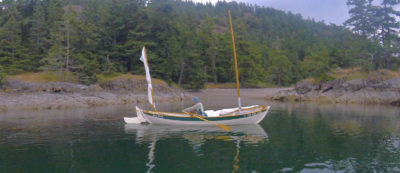
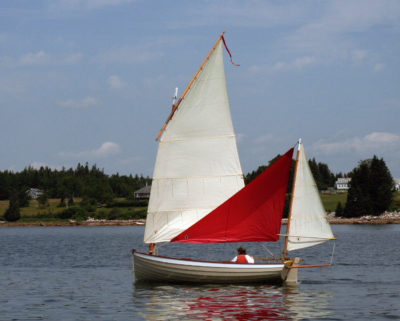
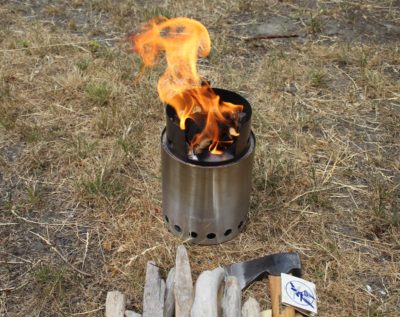
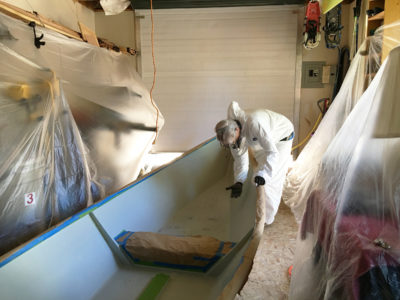
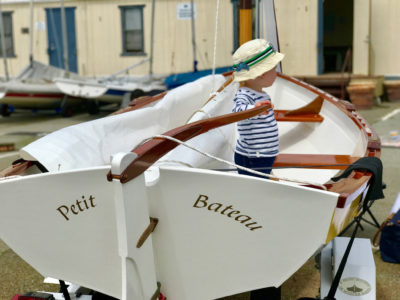
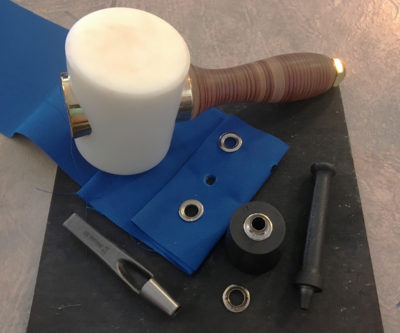
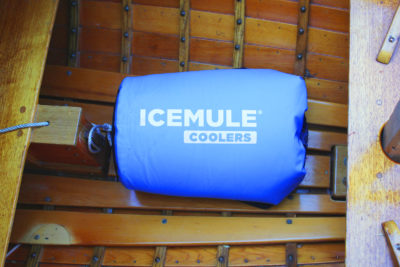
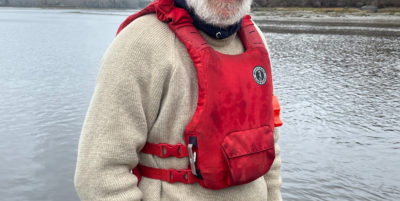
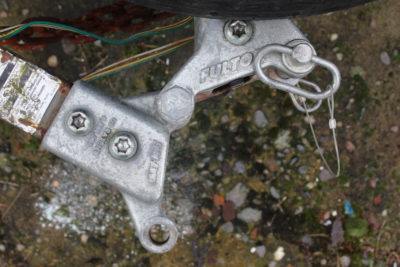
Most of the camping spots that small boat operators in Puget Sound use are in State Parks, and they forbid the use of any wood found within their boundaries to be used for fires, whether it is found on the beach or in the woods. So, now I carry my own with me in my canoes; I use wood pellets. A 40-pound bag costs about $6.00, and two cups of pellets (11 ounces) used in the same-sized solo stove will burn 40 minutes and costs about 10 cents. I had to make one alteration to my Solo Stove before using the commercial pellets–I installed another screen on top of the original that had 1/4” squares to prevent the pellets from falling through.
Over the winter I cut up smaller limbs from apple, maple, and cedar trees in my yard. I cut them about 1” long, and they are drying presently. Soon I will have time to run a test burn to see how my pellets compare with the commercial products.
I am a cabinet maker and I have found that any one of the three bandsaws in our shop transforms finger-sized sticks, that you or the dog find in the woods, into wonderful firewood. As we have all found, cutting small sticks with a chainsaw is a bit dicey.